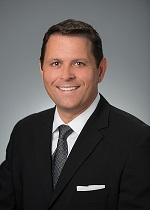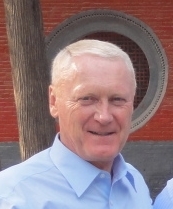 Three spine device company leaders discuss the market place today and the biggest opportunity for continued growth and development in the future.
Three spine device company leaders discuss the market place today and the biggest opportunity for continued growth and development in the future.
Minimally invasive market
Technology development has made many spine procedures less invasive than the open procedures of the past. Most surgeons use intraoperative fluoroscopy and other imaging techniques to visualize the spine during these procedures, but radiation exposure can be harmful.
"I see spine surgery technology evolving to the point where surgeons can perform minimally invasive procedures without compromising their own safety and drastically reducing the patient's radiation exposure," says Mazor Robotics Senior Vice President Christopher Prentice. "Guidance systems that eliminate the need for fluoroscopy and computed tomography would be the ultimate goal."
Mr. Prentice envisions a future with today's tools, implants and imaging integrated into a guidance system with real-time feedback during a procedure. Patients will also be a factor driving less invasive innovation.
"Patients are demanding more minimally invasive procedures as they get online and research," says Global Spine Marketing Manager at Invibio Michael Veldman. "I think patient education will increase the demand for the minimally invasive technology. It's 
Spinal fusion market
Spinal fusions have been a huge market in the past, and even as alternatives such as cervical disc arthroplasty become more prominent, huge opportunity remains in the spinal fusion market.
"Fusion is the largest part of the spine market with more than 90 percent share in the United States," says Mr. Veldman. "At Invibio, we are seeing a trend in the interbody space with our more differentiated material offering to improve bone apposition onto the implant."
He predicts incremental improvements in spinal fusion as a whole, with device companies looking to emerging markets for growth opportunities. "Patient populations there are large and procedural growth rates are high," says Mr. Veldman. "There is less uncertainty in these markets because you can take existing technologies and deliver them."
New minimally invasive approaches and materials are a few of the ways companies are currently differentiating their products. "There are new standalone PEEK devices with integrated screws that companies are using as a way to differentiate and stay competitive," says Mr. Veldman. "Many companies are also looking at materials or processes like titanium coatings as a way to add value and gain market share."
United States markets
While the FDA clearance process, medical device excise tax and other regulatory burdens make it difficult for device companies to innovate and bring new products to the market, true improvements will still have their place.
"I think the U.S. will still be the primary market for development and innovation in spine technologies," says Mr. Veldman. "I just don't think you'll see companies placing real bets on breakthrough technologies. Instead, I think you'll see incremental innovations. They'll develop devices that have a clear reimbursement pathway."
The Millennium Research Group recently reported that interbody devices are one of the remaining areas for device innovation. "I think you'll see a shift toward standalone devices with integrated screws because the reimbursement is relatively straightforward and they enable fixation without plates or rods," says Mr. Veldman. "Lateral procedures will also grow steadily. Many companies will likely round out their company portfolios with those devices."
 Jeffrey C. Felt, MD, CEO of Vertebral Technologies, also sees the lateral approach gaining steam for practical reasons. "When you compare it to the ALIF, there is a smaller chance of vascular injury or injury to the viscera because you don't have to do the abdominal approach," he says. "The lateral approach is much less traumatic for the patient and you can achieve as much, or more, end plate coverage than you can with an ALIF implant."
Jeffrey C. Felt, MD, CEO of Vertebral Technologies, also sees the lateral approach gaining steam for practical reasons. "When you compare it to the ALIF, there is a smaller chance of vascular injury or injury to the viscera because you don't have to do the abdominal approach," he says. "The lateral approach is much less traumatic for the patient and you can achieve as much, or more, end plate coverage than you can with an ALIF implant."
Mr. Prentice hasn't seen any difference in the speed of bringing products to the market, whether they are in the United States or overseas. "Across the globe there is a strong sentiment of evidence-based medicine and not having incremental technology for technology's sake," he says. "People want to know what exactly the technology does and how it impacts the patient economically to improve their situation. There are growing spine markets in China, India and Brazil that will be areas where technology may be introduced first in order to assess effectiveness and efficiency."
Opportunities for growth
The emphasis on cost control as well as increased quality with new and existing innovations will shape future device growth. Data collection efforts will grow as surgeons and industry seek to prove spine surgery works and improves patients' quality of life.
"I think there's going to be more collaboration between spine surgeons and device companies because the industry as a whole needs to demonstrate to the payers that spine surgery is effective," says Mr. Veldman. "I think we need to take on that challenge together."
Device companies are coming up with different ways to overcome these challenges and still provide valuable innovation for surgeons and patients.
"Our challenge is to improve our manufacturing and control as many aspects of it as possible so we can continue to provide the best implants for patients at a price that is within the means of third party payers.," says Dr. Felt. "We want to continue to improve our instruments and implants to make our system the most user-friendly for surgeons; provide the most consistent positive outcomes for patients; and provide our products at a reasonable cost so we can expand throughout the market and provide a benefit to a large number of patients and providers. Even though we are a small company, in meeting these goals we are gaining recognition for our efforts and look forward to our future success."
More Articles on Spine Surgery:
Minimally Invasive Spine Surgery: Do Benefits Outweigh the Risks?
Level 1 Trauma Centers: Cervical Spine Clearance Protocol Overview
Minimally Invasive SI Joint Fusion Gets Category I CPT Code

